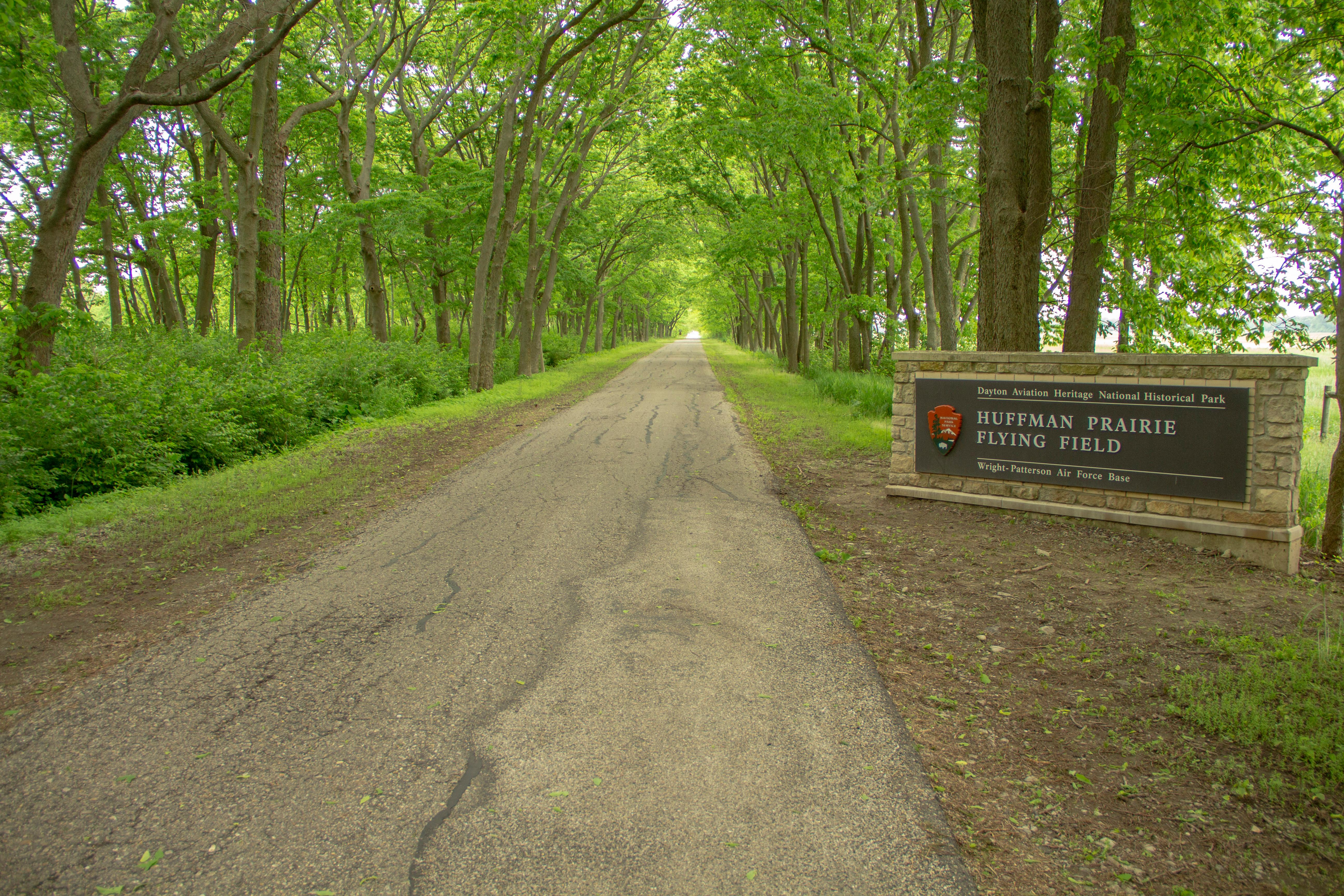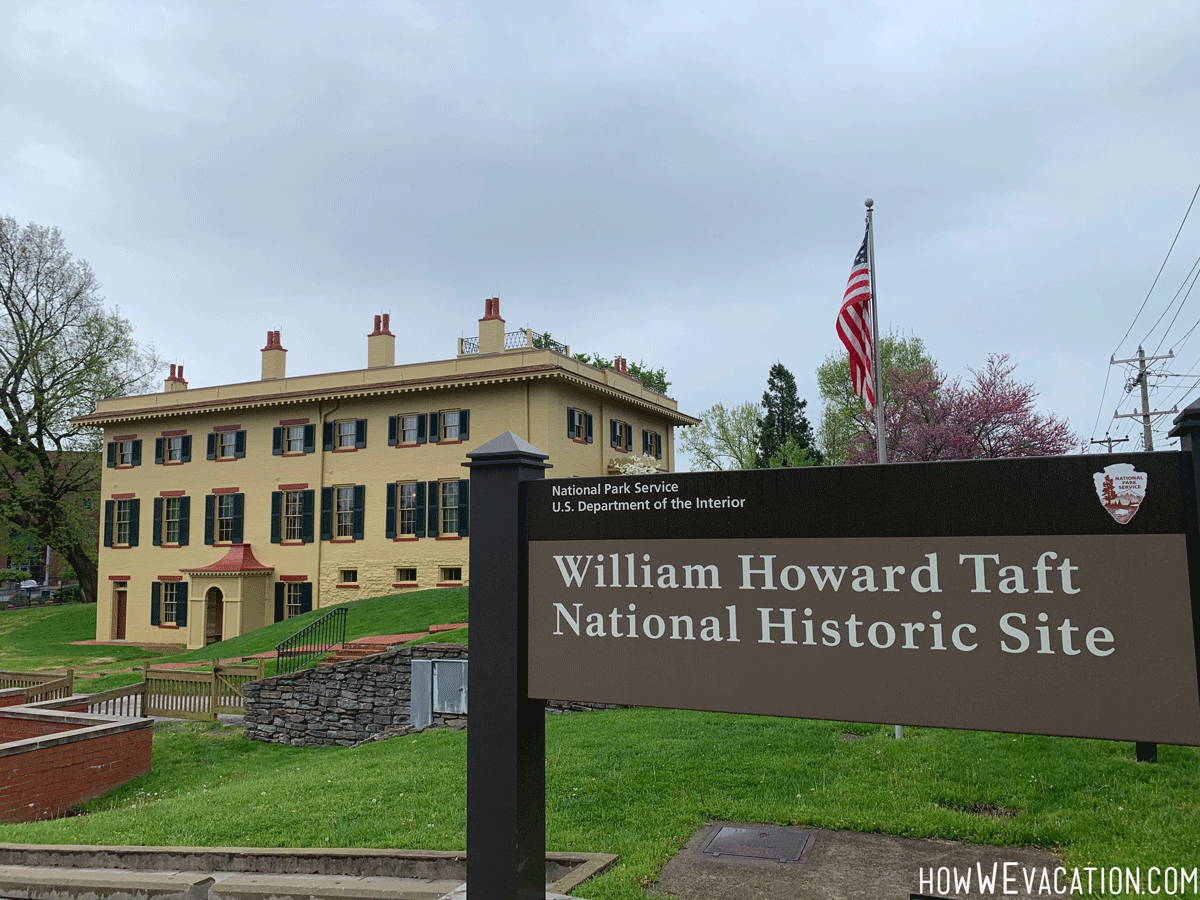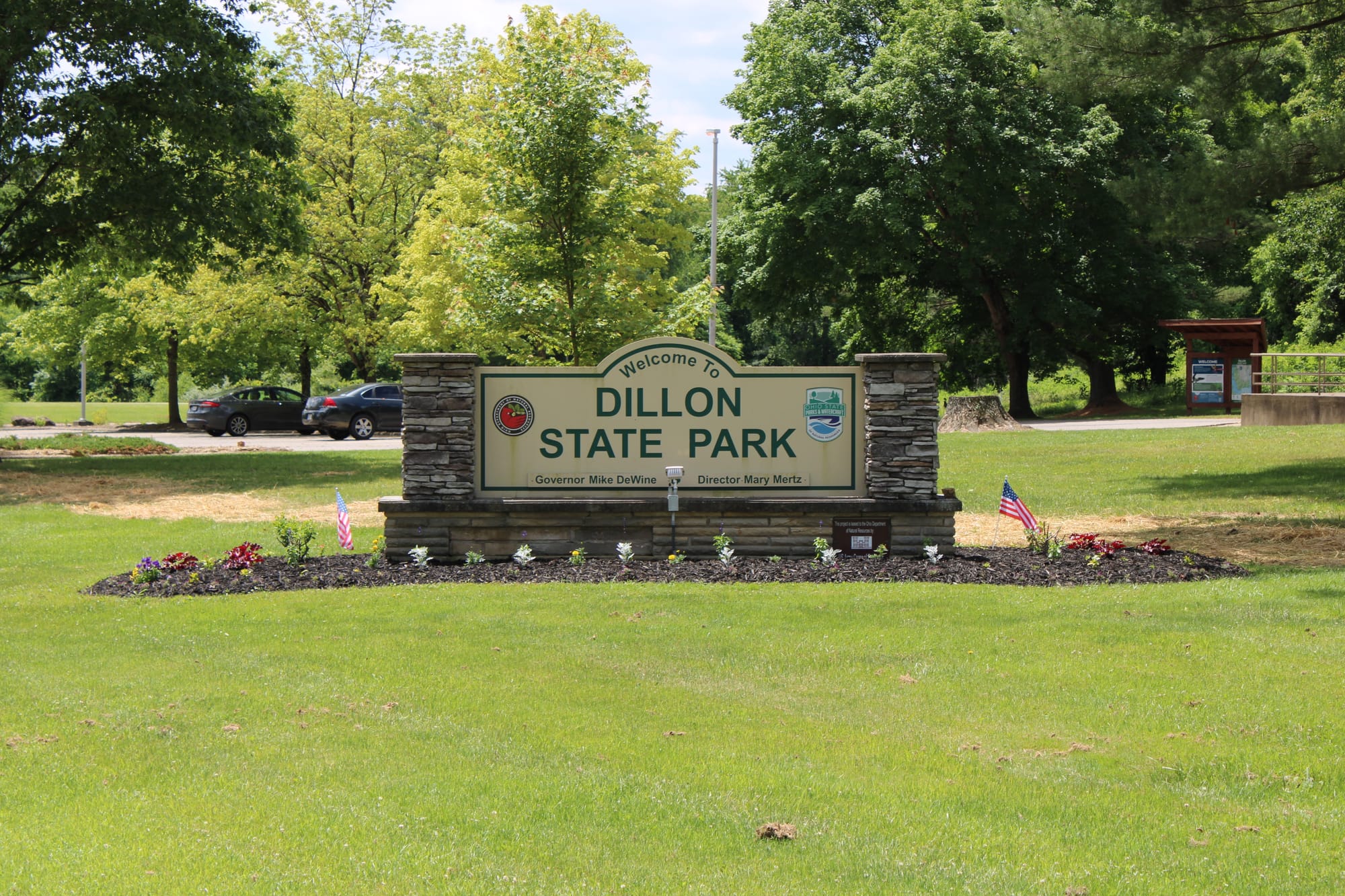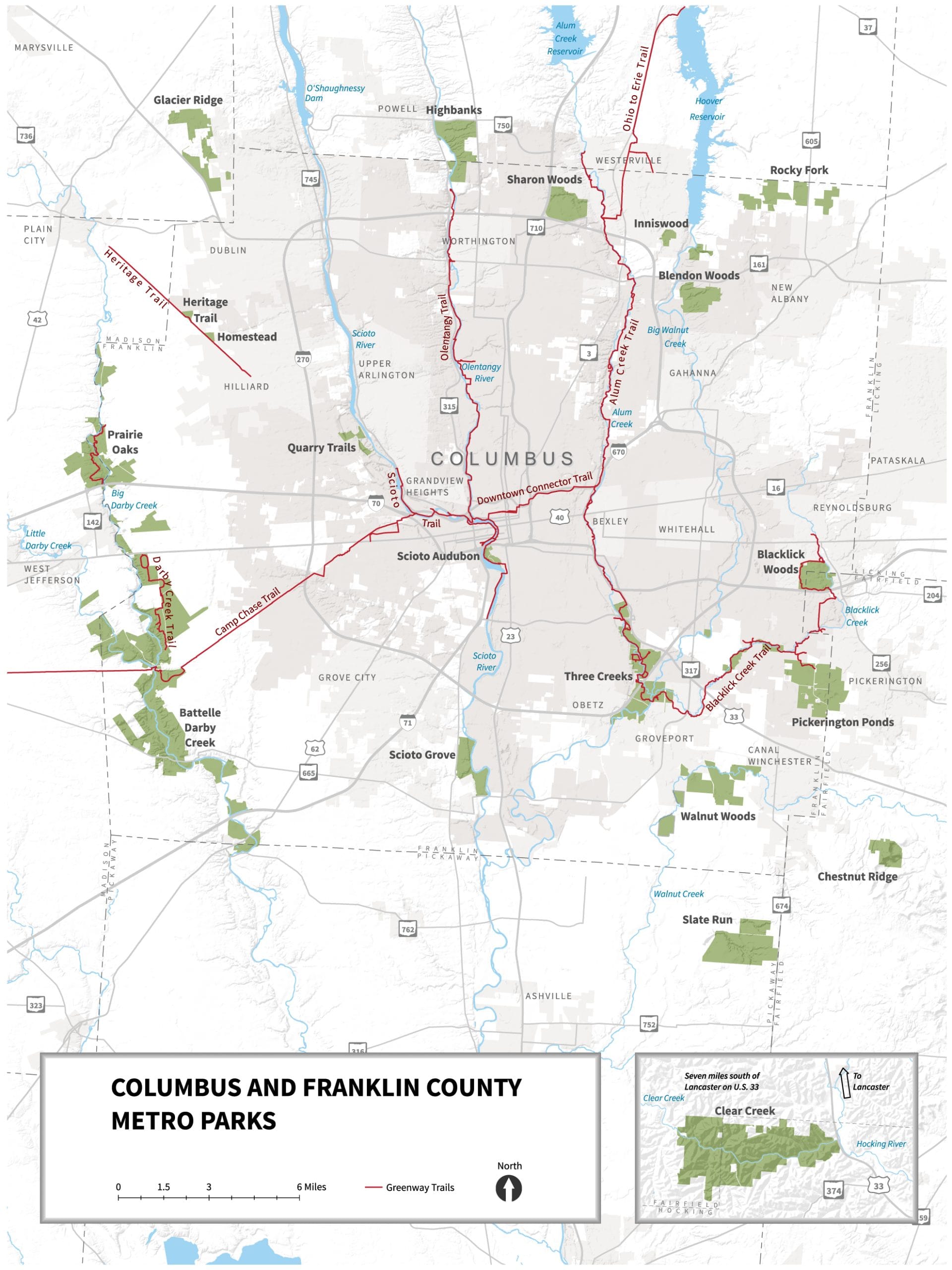Dayton, Ohio, is often referred to as the “Birthplace of Aviation” due to the Wright brothers' contributions, and the Dayton Aviation Heritage National Historical Park helps to preserve their story and its ongoing impact on technology and society.
There are some very nice nature trails and walking trails available as well. Which I will cover after the history and location of the sites.
Information About Wilbur and Orville Wright
- Wilbur Wright was born on April 16, 1867, in Millville, Indiana.
- Orville Wright was born on August 19, 1871, in Dayton, Ohio.

The two brothers were raised in Dayton, where their father, Milton Wright, was a bishop in the Church of the United Brethren in Christ, and their mother, Susan, was a talented mechanic and inventor. The brothers were curious, mechanically inclined, and interested in technology from a young age.
The Wright brothers operated a bicycle sales and repair business in Dayton, which provided them with the financial stability and mechanical skills they would later apply to their experiments.
In 1899, the Wright brothers began their serious experiments with flight. They first focused on creating a controlled glider, learning how to control the roll, pitch, and yaw of the aircraft. They tested their gliders in Kitty Hawk, North Carolina, a location chosen for its strong winds and isolation. There is the Kitty Hawk National Memorial there. We visited it and highly suggest stopping there if you are in the area.
.8e360eaa.jpg)
Instead of using rudders or other complex mechanisms, the Wrights used "wing warping" to control lateral balance and roll. They developed a fixed horizontal tailplane (elevator) for pitch control. They devised an effective system for controlling the aircraft through the use of a combination of wing warping, elevators, and rudders.
After years of experimentation and modification, the Wright brothers built their first powered aircraft, the Wright Flyer in 1903. The plane had a wingspan of 40 feet and was powered by a 12-horsepower engine they built themselves. The flyer also had a system for controlling flight.
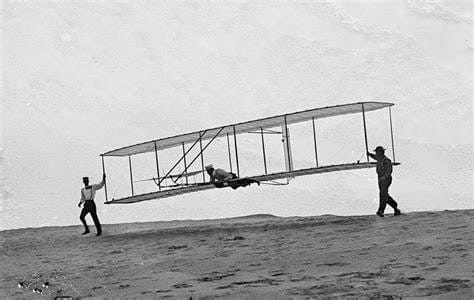
.jpg)
.jpg)

On December 17, 1903, at Kitty Hawk, North Carolina, the Wright brothers made brief flights. The first, piloted by Orville, lasted 12 seconds and covered 120 feet. Wilbur piloted the fourth flight, which lasted 59 seconds and covered 852 feet.
The Wright brothers continued refining their aircraft. In 1904 and 1905. In 1905, they successfully flew the Wright Flyer III, which could fly in controlled circles for over 30 minutes at a time.
The Wright brothers patented their invention, and by 1908, they had demonstrated their aircraft to the U.S. Army and to the public in Europe.
In 1909, the U.S. Army signed a contract with the Wright brothers to supply the military with airplanes. This helped the Wrights gain commercial recognition, and they formed the Wright Company to manufacture airplanes for military and civilian use.
The Wright brothers' accomplishments were celebrated worldwide, but they also faced challenges from other inventors, including Glenn Curtiss, who disputed their patent rights. This led to a series of legal battles.
Wilbur Wright died of typhoid fever on May 30, 1912, at the age of 45.
Orville Wright lived until January 30, 1948, passing away at 76. He spent his later years promoting aviation technology and serving as a consultant to the U.S. government and various aviation organizations.
Here’s an overview of the park’s history:
The park was established in 1992 and is located in Dayton, Ohio, the birthplace of powered flight. It has several National Historic Landmarks.
National Historic LandmarksThere are five National Historic Landmarks and a National Register Historic District located within Dayton Aviation Heritage National Historical Park. These include the Wright Cycle Company building, Hoover Block, Huffman Prairie Flying Field, 1905 Wright Flyer III, Hawthorn Hill, and the Paul Laurence Dunbar State Memorial. Together these sites tell the stories of the lives and legacies of Wilbur Wright, Orville Wright, and Paul Laurence Dunbar. Wright Cycle Company BuildingThe fourth location of the bicycle shop operated by the Wrights is the only building remaining as testament to their bicycle business. Designated a National Historic Landmark in 1990. Hoover BlockWilbur and Orville Wright operated Wright & Wright, Job Printers, on the second floor of the Hoover Block from 1890 to 1895. The building is part of the Wright-Dunbar Visitor Center. Added to the National Register as part of the West Third Street Historic District in 1988. Huffman Prairie Flying FieldRetrace the footsteps and flight paths of the Wright brothers, who made the airplane a practical invention at Huffman Prairie Flying Field in 1904 and 1905. The nearby Huffman Prairie Flying Field Visitor Center discusses the Wrights' accomplishments at the flying field and the history of Wright-Patterson Air Force Base. Designated a National Historic Landmark in 1990. 1905 Wright Flyer IIIThe world's first practical airplane, built by the Wright brothers in 1905 and flown at Huffman Prairie Flying Field, is the centerpiece of the Wright Brothers Aviation Center at Dayton History's Carillon Historical Park. Designated a National Historic Landmark in 1990. Hawthorn HillIn 1914, Orville Wright, Katharine Wright, Milton Wright, and servants Charles and Carrie Kayler Grumbach moved into this large Georgian revival style mansion in Oakwood. Orville lived at Hawthorn Hill until his death in 1948. Designated a National Historic Landmark in 1991. Paul Laurence Dunbar House Historic SitePaul Laurence Dunbar lived in this house in west Dayton with his mother, Matilda Dunbar, from 1904 until his death in 1906. After Matilda Dunbar's 1936 death, the state of Ohio acquired the property and opened it for public visitation as the first house museum commemorating an African American. Designated a National Historic Landmark in 1962. |
Addresses and Phone Numbers for the Sites
.jpg)
The Wright-Dunbar Visitor Center
16 South Williams Street
Dayton, Ohio 45402
FREE
Phone 937-225-7705
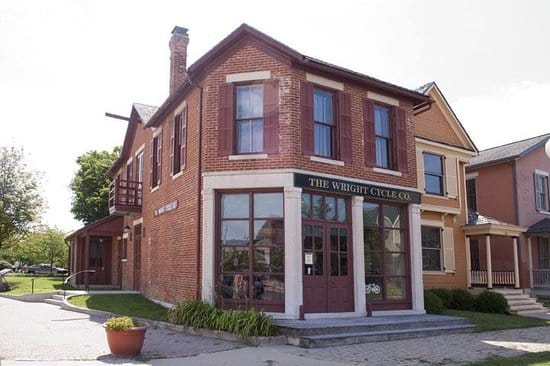
The Wright Cycle Company
22 South Williams Street
Dayton, Ohio 45402
FREE
Phone 937-225-7705.
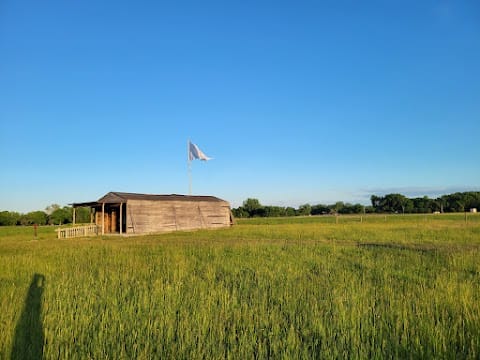
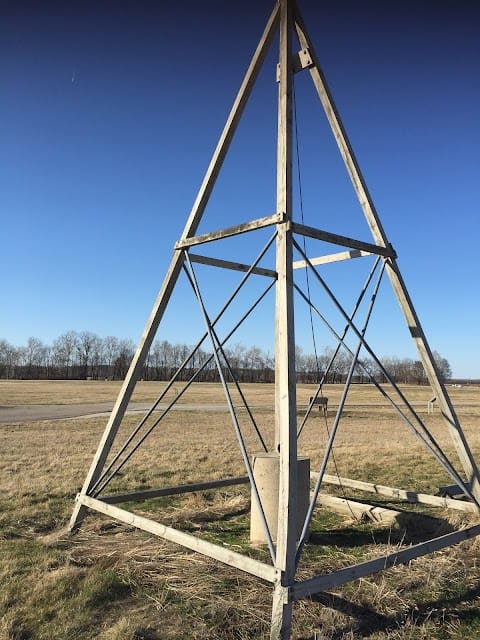
Huffman Prairie Flying Field Interpretive Center
2380 Memorial Road
Wright-Patters0n Air Force Base
Fairborn, Ohio
FREE
Phone 937-425-0008.
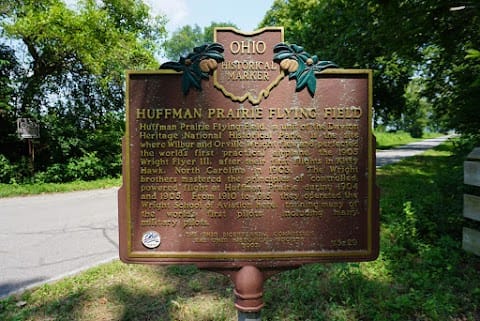
Huffman Prairie Flying Field
Gate 16A off State Route 444
Fairborn, Ohio
FREE
Phone 937-425-0008.

Dayton History at Carillon Park
1000 Carillon Boulevard
Dayton, Ohio
Members free
$12.00 Adults
$10.00 Seniors (aged 60 and over)
$8.00 Children (aged 3-17)
Phone 937-293-2841
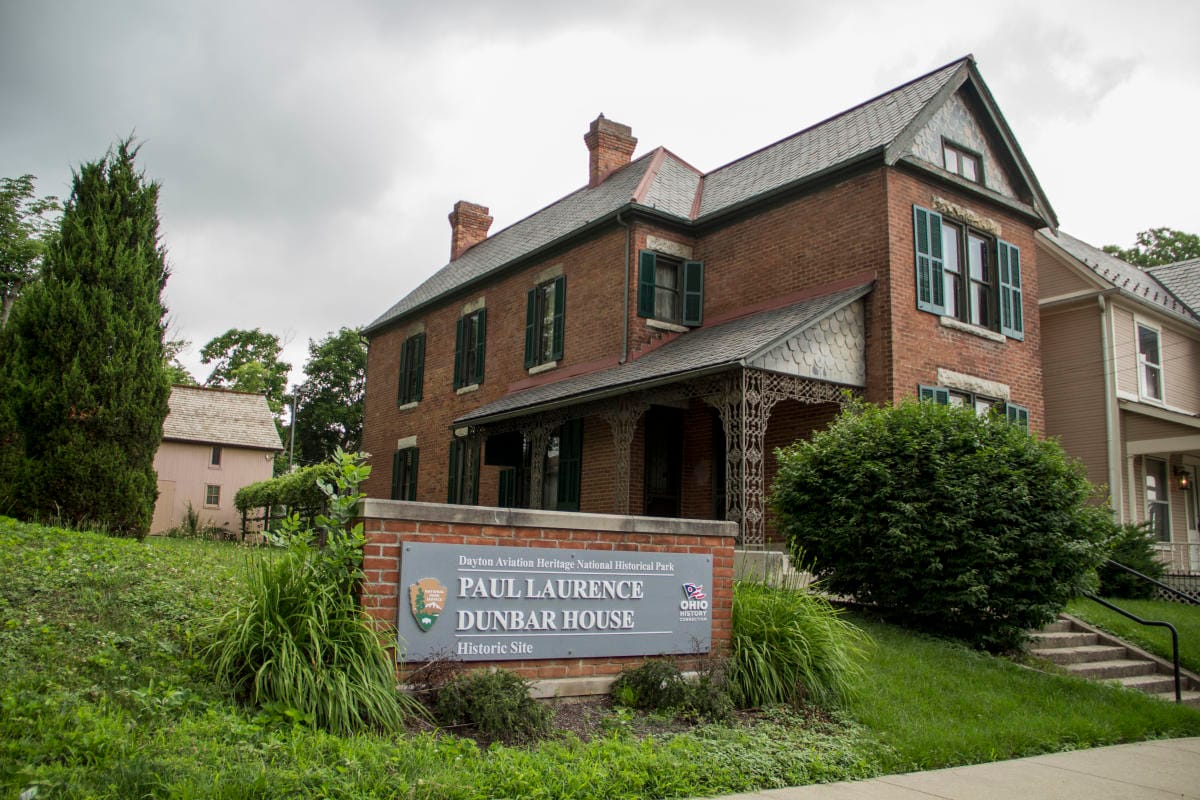
Paul Laurence Dunbar House
219 North Paul Laurence Dunbar Street
Dayton, Ohio
FREE
The Dunbar House is available for tours Friday, Saturday and Sunday from 10:00am to 4:00pm (last tour at 3:30pm).
Phone 937- 224-7061.
.jpg)
Walking and Nature Trails
There are several walking paths and nature trails. Please note that the park focuses more on historical sites related to the Wright brothers, aviation pioneers, and the area's history, rather than hiking.
Here are a few of the trails and paths you might find at the park, with information about their length and difficulty:
1. Wright Brothers Memorial Path
- Length: About 0.5 miles (one way)
- Difficulty: Easy
- This paved path leads from the Wright Brothers' Memorial to the Wright brothers' gravesite in Wright Brothers Memorial Park, a small green space that commemorates the brothers' contributions to aviation. The path is mostly flat, making it accessible for people of all fitness levels.
2. Trail at Huffman Prairie Flying Field
- Length: Approximately 1.5 miles (loop)
- Difficulty: Moderate
- This path runs through Huffman Prairie Flying Field, a historical site where the Wright brothers perfected their flying skills. The trail is a bit more rugged than the memorial path, with grass and uneven ground in certain places. It offers views of the historic airfield and is located in a nature preserve area, making it a pleasant but slightly more challenging walk.
3. Great Miami River Trail (connecting with Dayton Aviation Heritage National Historical Park)
- Length: Over 75 miles (but portions are near the park)
- Difficulty: Varies, but mostly easy to moderate
- This extensive trail runs along the Great Miami River and connects several parks and recreational areas in Dayton, including parts of the Dayton Aviation Heritage National Historical Park. The portions that pass through the park are paved and easy to walk or bike on.
4. Trail at Carillon Historical Park
- Length: Varies, approximately 1-2 miles
- Difficulty: Easy to moderate
- Though technically outside the boundaries of the National Historical Park, Carillon Historical Park is located nearby and offers several short, accessible walking paths. It includes a variety of exhibits related to the region's history and development of flight, with paved trails leading through the park’s various historical buildings and attractions.
Conclusion:
Dayton Aviation Heritage National Historical Park serves as a tribute to the pioneering spirit of Orville and Wilbur Wright, as well as to the broader history of aviation and innovation. It helps preserve the stories of those early days of flight, offering an educational and inspiring experience for those interested in the origins of modern aviation. Whether you're a history enthusiast, aviation fan, or simply interested in learning about the innovators who changed the world, Dayton Aviation Heritage is a must-visit destination.

